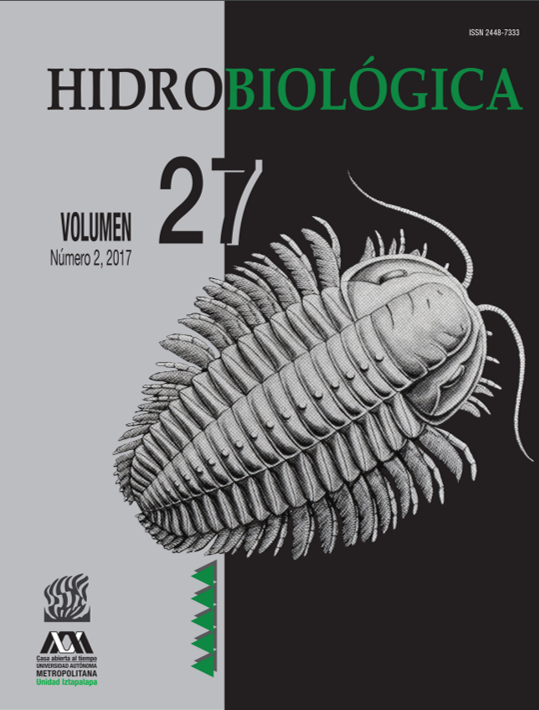Diversity and distribution of caprellids (Crustacea: Amphipoda: Caprellidae) in the Eastern Tropical Pacific region: Review of the literature
DOI:
https://doi.org/10.24275/uam/izt/dcbs/hidro/2017v27n2/CupulKeywords:
Biodiversity, caprellids, Mexican Pacific, species richness.Abstract
Background. Caprellids are one of the most diverse and abundant amphipods associated with marine environments. They play a fundamental role in ecosystems as an energy source at different trophic levels. In spite of their importance, abundance, and species richness in the Eastern Tropical Pacific (ETP), they are scarcely known. Goals. The purpose of this study was to collect and update existing knowledge of caprellids in the ETP and to describe general information about feeding habitats, distribution, reproduction, and life cycle. Methods. The work focused on searching for bibliographic material published between 1903 and 2016 on the ETP, using the Google Scholar web search engine and the Redalyc, Scielo, Science Direct, and ISI Web databases, as well as cross-references. Results. Sixteen species grouped in five genera are distributed at a depth mostly between 1-30 m, within the littoral zone and particularly associated with coral reef ecosystems. In the last decade, knowledge about caprellids species richness has increased by 65.5%. However, 57% of the records in the Eastern Tropical Pacific have been reported in the Gulf of California and Central Mexican Pacific subregions, a fact that reveals a large information gap with respect to the rest of the ETP subregions. Conclusions. Due to the scarce information and the potential of finding more species in the region, we recommend increasing the sampling effort in order to contribute to the knowledge of the group and generate baseline information for further research that will inform improved management strategies and conservation of marine ecosystems.
Downloads
Published
How to Cite
Issue
Section
License
Los autores/as que publiquen en esta revista aceptan las siguientes condiciones:
De acuerdo con la legislación de derechos de autor, HIDROBIOLÓGICA reconoce y respeta el derecho moral de los autores, así como la titularidad del derecho patrimonial, el cual será cedido a la revista para su difusión en acceso abierto.
Publicar en la revista HIDROBIOLÓGICA tiene un costo de recuperación de $500 pesos mexicanos por página en blanco y negro (aproximadamente 29 dólares americanos) y $1000 pesos por página a color (aproximadamente 58 dólares americanos).
Todos los textos publicados por HIDROBIOLÓGICA sin excepción se distribuyen amparados bajo la licencia Creative Commons 4.0Atribución-No Comercial (CC BY-NC 4.0 Internacional), que permite a terceros utilizar lo publicado siempre que mencionen la autoría del trabajo y a la primera publicación en esta revista.
Los autores/as pueden realizar otros acuerdos contractuales independientes y adicionales para la distribución no exclusiva de la versión del artículo publicado en HIDROBIOLÓGICA (por ejemplo incluirlo en un repositorio institucional o publicarlo en un libro) siempre que indiquen claramente que el trabajo se publicó por primera vez en HIDROBIOLÓGICA.
Para todo lo anterior, el o los autor(es) deben remitir el formato de Carta-Cesión de la Propiedad de los Derechos de la primera publicación debidamente requisitado y firmado por el autor(es). Este formato se puede enviar por correo electrónico en archivo pdf al correo: enlacerebvistahidrobiológica@gmail.com; rehb@xanum.uam.mx (Carta-Cesión de Propiedad de Derechos de Autor).
Esta obra está bajo una licencia de Creative Commons Reconocimiento-No Comercial 4.0 Internacional.


